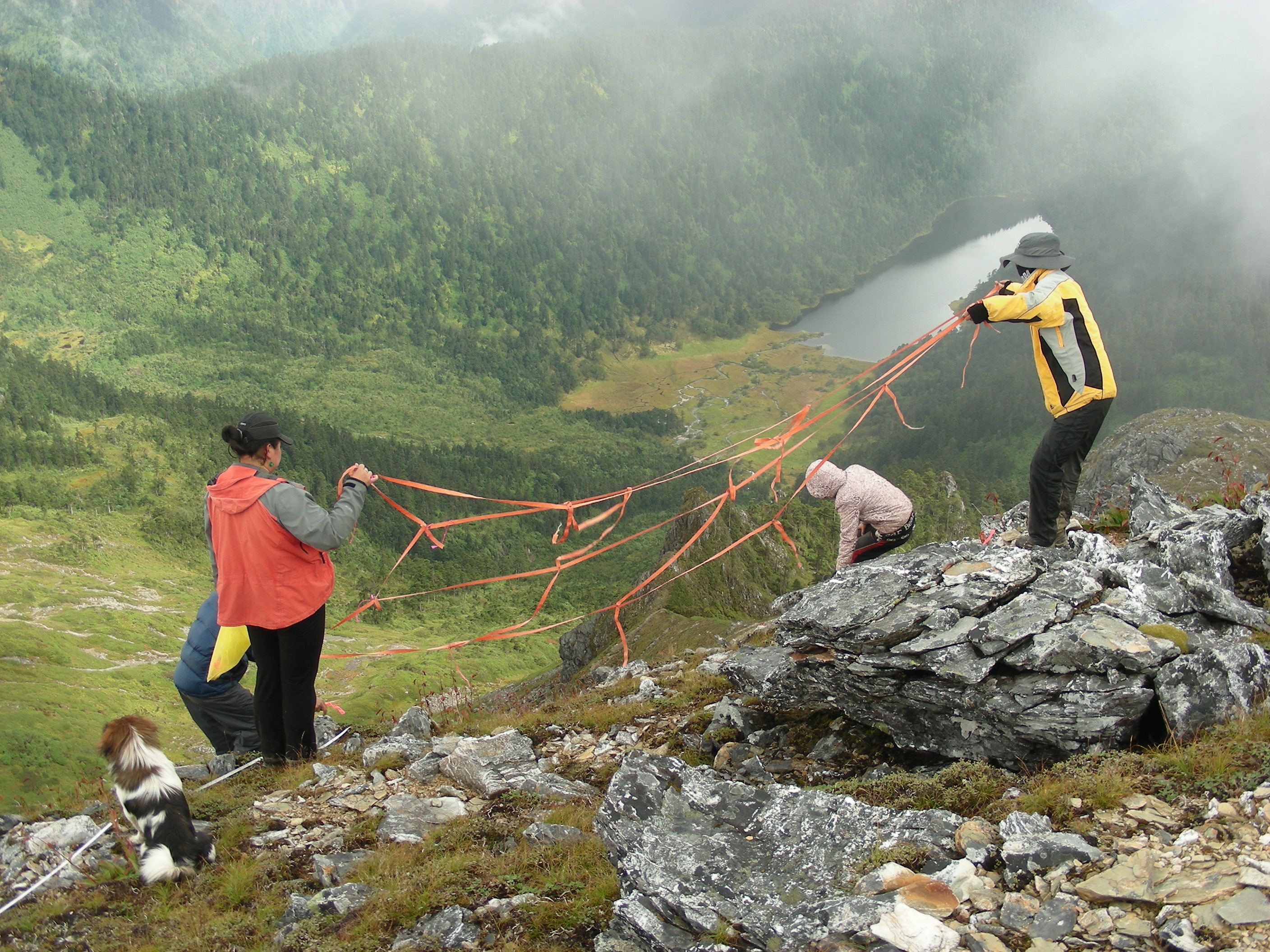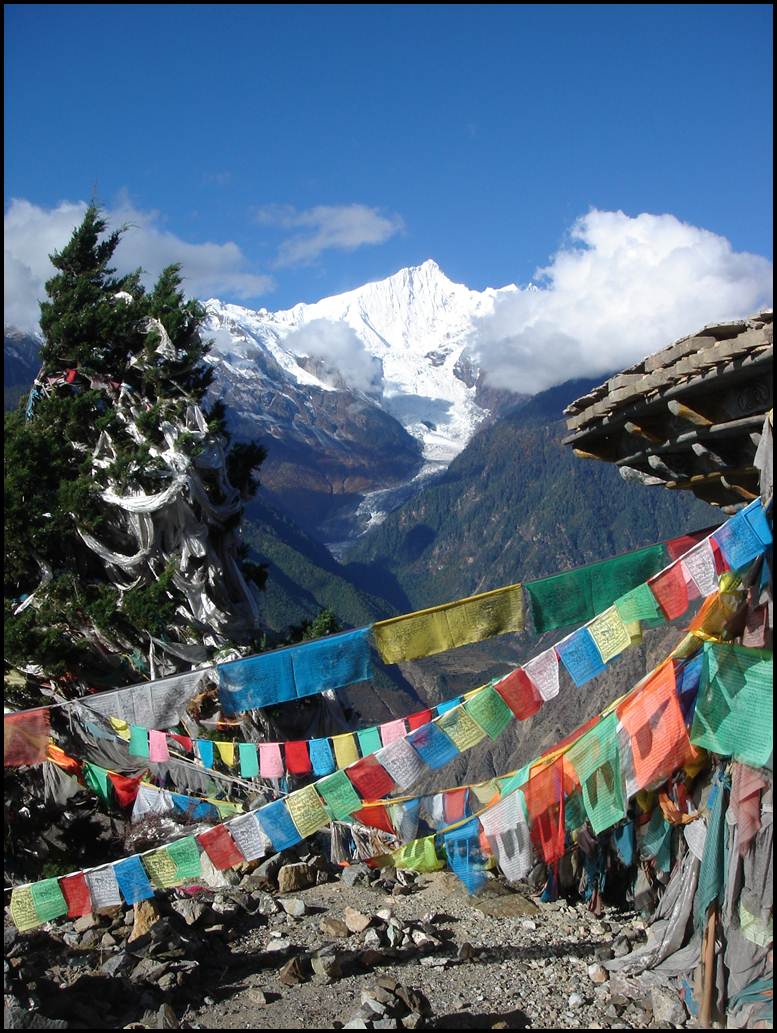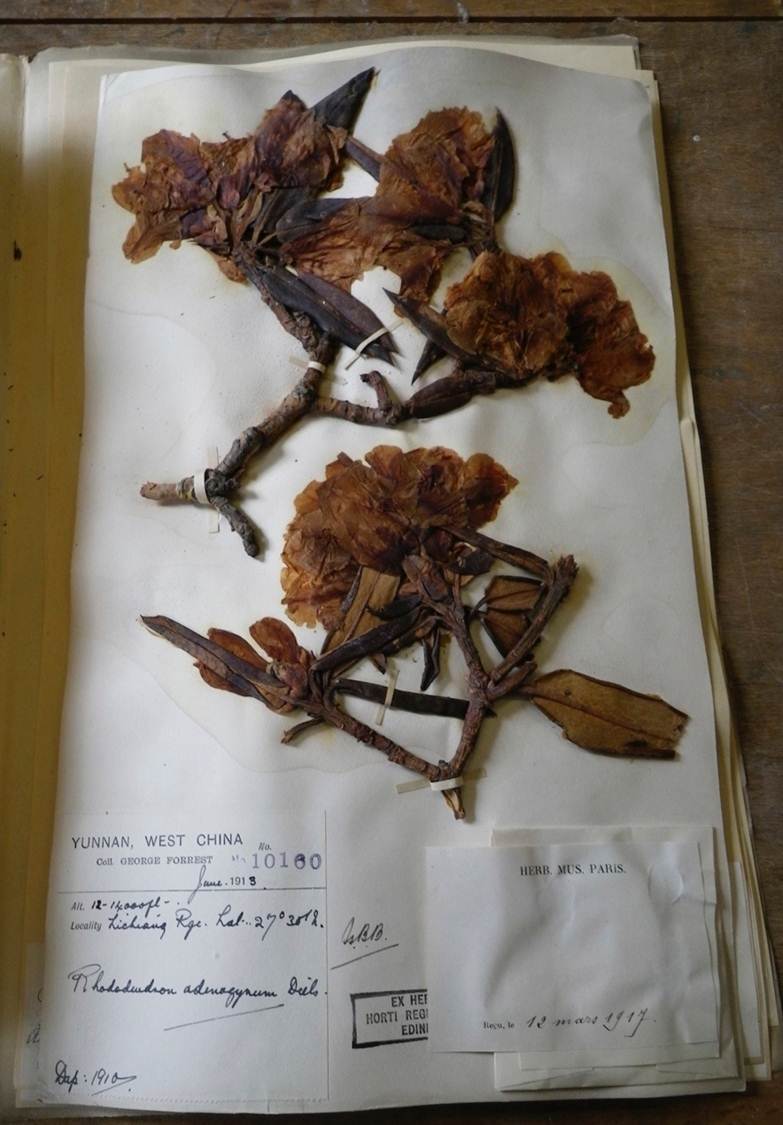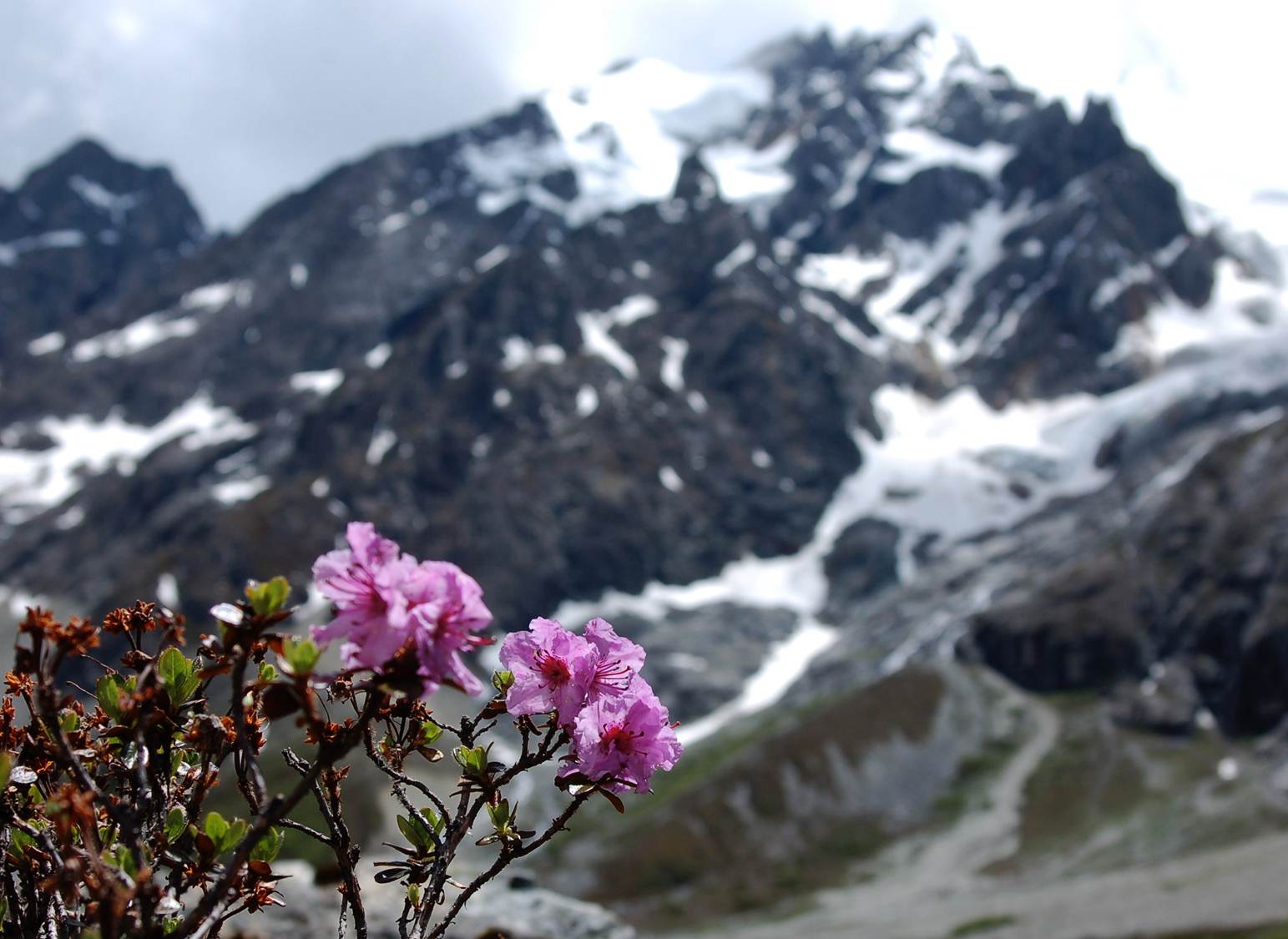Vegetation Change
WLBC researchers and local collaborators track the impact of climate change both on the alpine flora and on traditional culture by setting up permanent biodiversity and climate monitoring plots on mountain summits. This research is in collaboration with the international consortium “Global Observational Research in Alpine environments” (GLORIA). Within our network of Himalayan GLORIA sites, we pair standard GLORIA methods with ethnobotanical interviews of indigenous mountain residents and local plant experts. With them, we document uses of mountain plants and pay careful attention to particular species represented in the plots. Permanent plots are re-surveyed at seven-year intervals, allowing us an appropriate temporal scale to monitor the long-term effects of climate change. Monitoring techniques have been honed by GLORIA teams to be minimally labor-intensive, in order to realistically support the goal of repeated, long-term monitoring.
Standardized, quantitative methods and close collaboration within our Himalayan network allows coordinated species identification and data analysis, enabling both a broad scope and detailed comparisons, and dramatically increasing the value of this monitoring. Beyond this, methods for climate and biodiversity monitoring are identical to those employed by researchers on other GLORIA sites across the world, allowing broad-scale comparisons.
Providing a historical context for these forward-looking monitoring projects are historical photos, which can reveal significant changes to the landscape. At our Himalayan research sites, re-photographing sites for which historical photographs exist has shown significant changes in vegetation. Some of these changes, like the movement upwards of shrubs into alpine meadows and of trees into the shrub zone, are likely to be a result of the warming climate.

Traditional Knowledge
Climate change threatens not only plants across the world but also the ethnobotanical traditions that use these plants. At coastal and mountain field sites, researchers from the William L. Brown Center work to understand the effects of climate change on ethnobotanical traditions and the ways that these systems can help to adapt to and mitigate climate change.

At our coastal North American sites, traditional ecological knowledge (TEK) is historically a tool with which indigenous peoples have responded to crises like climate change. Tragically, TEK of these indigenous coastal peoples is itself threatened by climate change and other socio-political and environmental factors. TEKs are based on different climates and have never had to deal with climate change of the present scale or speed. Concurrently, indigenous languages, in which TEKs are contained, are being lost, and indigenous youth are not learning TEKs because of western schooling, a lack of involvement with TEK practices, and a lack of interest in traditional ways. Meanwhile, elders, often the holders of TEK, are not revered as formerly, and socio-political disenfranchisement continues to harm indigenous peoples. WLBC researchers are working with some of the first indigenous peoples to be contacted by the earliest settlers in our country. They live along the Northeast coast and islands and are fighting for cultural and ecological survival. This new program begins by documenting and evaluating useful plants and threats, altered plant communities and landuses, and changing plant phenologies. We evaluate how these factors affect the traditional natural resource base of the coastal and island indigenous peoples of the Northeastern America.
Like other mountain areas across the world, our high-elevation field sites are vital areas of biocultural diversity, sources of useful plants, and sites of cultural and ecological salience. Himalayan peoples depend upon alpine flora for medicine and grazing yaks: traditionally, doctors spend at least a month every year in the mountains collecting medicinal herbs, while herders spend 3–4 months each year in the alpine pastures. The WLBC team has interviewed Himalayan indigenous people who relate that snows are decreasing, unpredictable monsoons are affecting crops, and pests and diseases are increasing. With warmer temperatures, they now must worry about food spoilage. The mountains themselves, to many Himalayan peoples, are the sacred manifestation of gods. At one field site below sacred Mt. Khawa Karpo, local Tibetans see climate change as a cosmological crisis. They worry that the melting glaciers and snows indicate that the god Khawa Karpo is angry and withdrawing from the earth. One 85 year old woman said, “I am worried that the earth will be destroyed if the snows disappear completely.”

Phenology
Another way of tracking changes in the climate is the study of phenology: the yearly timing of life-history stages. For plants, these include leaf flush, flowering, and fruiting. Warming temperatures can cause certain plant species to flower earlier in the spring, while other species, which require cold winter temperatures to set dormancy, may have delayed flowering with warmer weather. These changes, affecting different organisms in different ways, threaten to desynchronize interactions between plants, and among plants, insect and animals which pollinate them and disperse their seeds, and indigenous people to whom the plants are important.
 We are comparing plant phenologies in the coastal Northeast with records from the same region, on the ‘Procession of Flowers’ by Eliphalet Williams Hervey in 1860, 1890 and 1911. Compared to these historical records, we can start to see both advanced flowering in certain species, but also delayed flowering in others. These changes drive desynchronization between plants and other organisms. For instance, as the flowering time of shadbush (Amelanchier) changes, the myriad of birds that eat its berries - bluebirds, robins, mockingbirds, cedar waxwings, redstarts, blue jays, orioles, cardinals, towhees, pheasants, ruffed grouse and many other birds – no longer find their favored food at the same time in summer. Historically, shadbush takes its name from its importance as a seasonal indicator: it flowers when the shad fish migrate upriver to spawn. This relationship is now broken – as shadbush flowering changes, it no longer reliably indicates shad migration.
We are comparing plant phenologies in the coastal Northeast with records from the same region, on the ‘Procession of Flowers’ by Eliphalet Williams Hervey in 1860, 1890 and 1911. Compared to these historical records, we can start to see both advanced flowering in certain species, but also delayed flowering in others. These changes drive desynchronization between plants and other organisms. For instance, as the flowering time of shadbush (Amelanchier) changes, the myriad of birds that eat its berries - bluebirds, robins, mockingbirds, cedar waxwings, redstarts, blue jays, orioles, cardinals, towhees, pheasants, ruffed grouse and many other birds – no longer find their favored food at the same time in summer. Historically, shadbush takes its name from its importance as a seasonal indicator: it flowers when the shad fish migrate upriver to spawn. This relationship is now broken – as shadbush flowering changes, it no longer reliably indicates shad migration.
In mountains, changes in elevation and phenology are especially important: a hundred feet up or down represents a very real temperature difference, and in the short alpine summer a snowmelt coming a few weeks early or late can make the difference in setting seed. For instance, Himalayan rhododendrons were heavily collected by the pioneering plant explorers of the early 20th century. These specimens, along with hundreds of years of indigenous knowledge, comprise a baseline from which to analyze the long-term effects of climate change on the genus. Preliminary data suggest that while rhododendrons flowering earlier with warmer annual temperatures, they actually flower later after especially warm autumns. These contrasting responses may prevent rhododendrons from adaptively responding to climate change. Ultimate effects may include those on honeybee and bumblebee populations, for whom rhododendrons are an important nectar resource throughout the year, and to the indigenous people of the Himalaya, for whom specific rhododendron species act as an important resources, seasonal indicators, and components of seasonal religious festivals.
